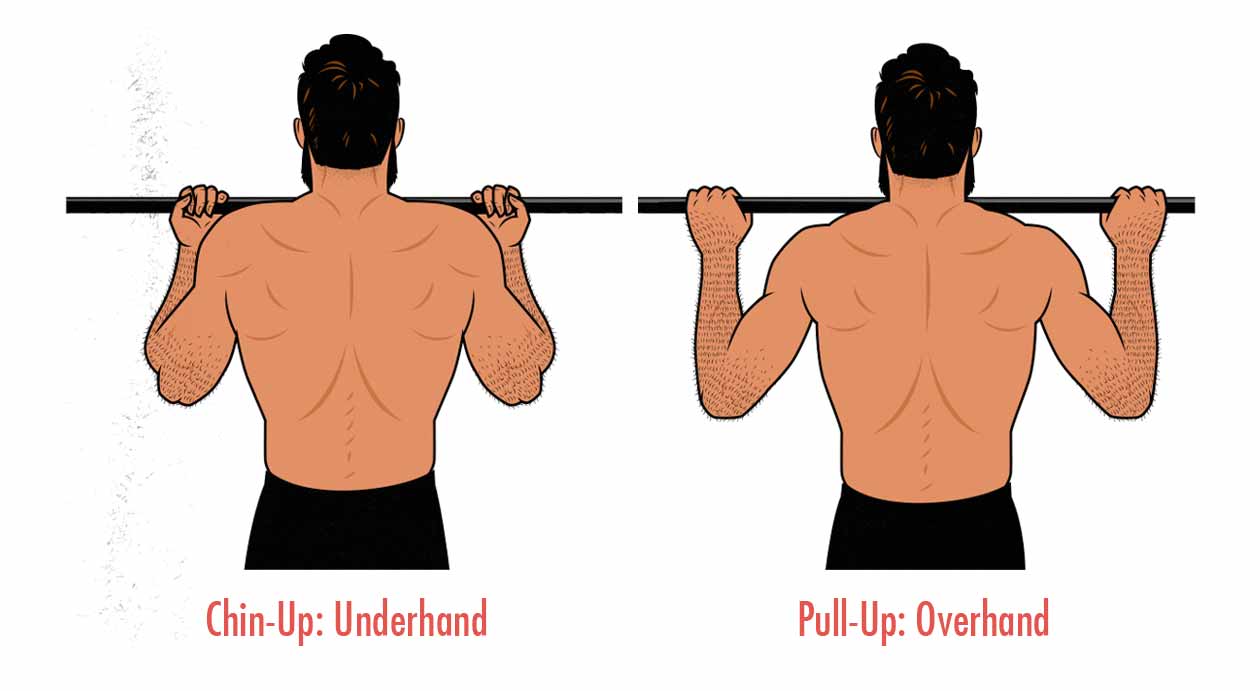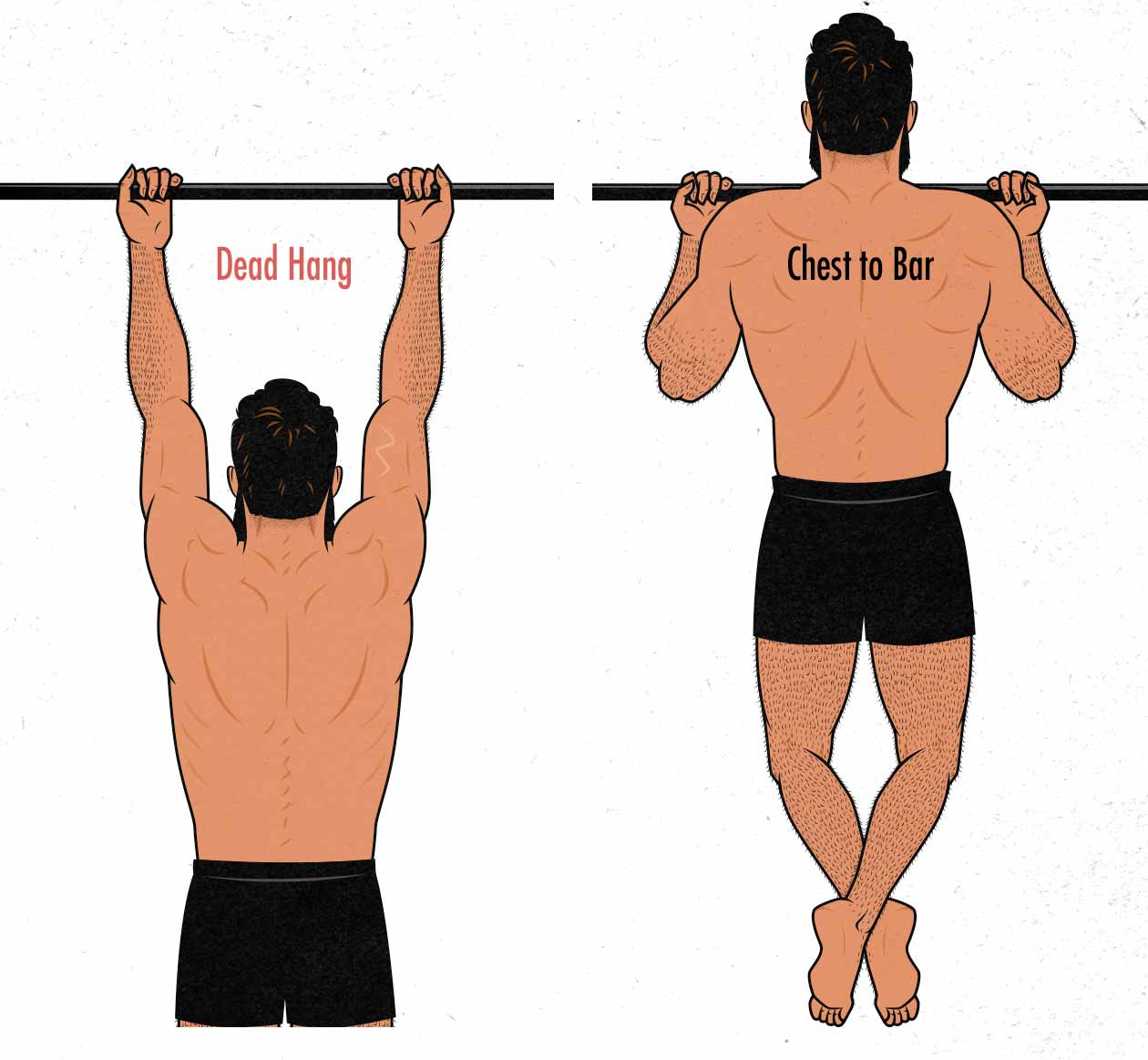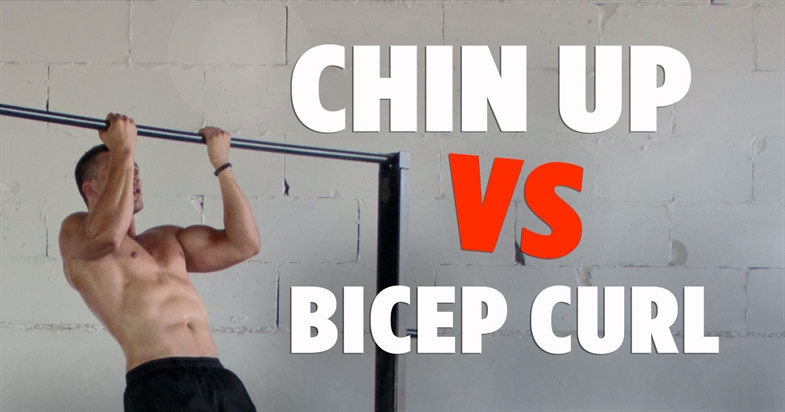Have you ever wondered if chin-ups are effective for building your biceps? Many people think of chin-ups as primarily an exercise for the back or the upper body in general. However, chin-ups can actually be a great way to target and strengthen your biceps as well. In this article, we will delve into the topic of whether chin-ups are truly effective for biceps and explore some of the reasons why they can be a valuable addition to your workout routine.
When it comes to building biceps, there is often a misconception that isolated exercises like bicep curls are the only way to achieve significant growth. While bicep curls certainly have their place in a well-rounded workout routine, chin-ups provide a unique challenge that can lead to impressive bicep gains.
Chin-ups work your biceps in two main ways: through elbow flexion and through the constant tension placed on the muscles during the exercise. Additionally, chin-ups engage multiple muscle groups in your upper body, including your back and shoulders, which can further contribute to overall arm development.
In this article, we will dive deeper into the mechanics of chin-ups and how they target your biceps specifically. We will also discuss the different variations of chin-ups that you can incorporate into your routine to maximize bicep engagement. Whether you’re a beginner looking to establish a solid foundation or an experienced lifter wanting to switch up your routine, understanding the effectiveness of chin-ups for biceps can help you make informed decisions about your workouts.
So, let’s explore the world of chin-ups and discover how they can help you build strong and defined biceps. Chin-ups are a popular exercise for targeting multiple muscles in the upper body, including the biceps. However, many people wonder if chin-ups alone are enough to effectively build and strengthen the biceps. In this article, we will explore the mechanics of chin-ups, the muscles involved, and whether they are sufficient for bicep development.
We will also discuss the factors that affect bicep engagement during chin-ups, techniques to optimize bicep activation, and how to incorporate chin-ups into your bicep workouts.

The Mechanics of Chin-Ups
Chin-ups are a compound exercise that primarily targets the back muscles, specifically the latissimus dorsi or “lats.” However, they also engage several other muscles, including the biceps. During a chin-up, you pull yourself upward using an underhand grip with your palms facing towards you. This grip places greater emphasis on the biceps, making them a key player in the exercise.
Muscles Involved in Chin-Ups
While the primary focus of chin-ups is on the lats, several other muscles play a role in the movement. In addition to the biceps, the muscles involved in chin-ups include the brachialis, brachioradialis, teres major, and the posterior deltoids. This means that by performing chin-ups, you are not only targeting your biceps but also strengthening your back, shoulders, and forearms.

Range of Motion in Chin-Ups
The range of motion in chin-ups can vary depending on factors such as grip width and body positioning. When performing a chin-up, it is important to lower yourself until your arms are fully extended before pulling yourself back up. This full range of motion ensures that you are maximizing the activation of the targeted muscles, including the biceps.
Chin-Ups vs. Bicep Isolation Exercises
While chin-ups are effective for targeting the biceps, they should not be the sole exercise in your bicep training routine. Bicep isolation exercises such as dumbbell curls, hammer curls, and preacher curls can provide a more targeted and focused stimulus to the biceps. These exercises allow for greater control over the weight and movement, leading to better muscle activation and growth.

Benefits of Chin-Ups for Biceps
Chin-ups offer several benefits for biceps development. Firstly, they allow you to train multiple muscle groups simultaneously, saving time in your workout routine. Additionally, chin-ups provide a functional movement pattern that mimics real-life actions such as climbing or pulling yourself up. By incorporating chin-ups into your training, you are not only building stronger biceps but also improving overall upper body strength and functionality.
Limitations of Chin-Ups for Biceps
While chin-ups are effective for biceps development, they do have certain limitations. One of the main limitations is the inability to isolate the biceps fully. Since chin-ups engage multiple muscles, the biceps may not receive the same level of stimulation as they would during a bicep isolation exercise. This means that if your primary goal is to specifically target and build your biceps, additional exercises may be necessary.

Factors Affecting Bicep Engagement in Chin-Ups
Several factors can affect the amount of bicep engagement during chin-ups. One of these factors is grip width. A narrower grip puts more emphasis on the biceps, while a wider grip places greater emphasis on the back muscles. Experimenting with different grip widths can help you find the sweet spot that maximizes bicep activation.
Another factor that affects bicep engagement is body positioning. Leaning back slightly during the chin-up can increase the emphasis on the biceps, while a more upright position may shift the focus to the lats. It is important to maintain proper form and avoid excessive swinging or momentum to ensure that the biceps are being targeted effectively.
Optimizing Chin-Up Technique for Biceps
To optimize bicep activation during chin-ups, proper form and execution are crucial. Firstly, ensure that your grip is comfortable and secure. Your palms should be facing towards you, with your hands slightly wider than shoulder-width apart. Maintain a straight line from your head to your heels throughout the movement.
When performing the chin-up, focus on pulling with your biceps rather than using momentum or swinging. Squeeze your biceps at the top of the movement to fully engage the muscles. To increase the emphasis on the biceps, you can also experiment with variations such as partial reps or slow eccentrics (lowering phase).

Variations to Target Biceps More
If you want to target your biceps even more during chin-ups, there are a few variations you can try. One option is to perform chin-ups with a supinated grip, which means your palms are facing away from you. This grip places more emphasis on the biceps and can provide a greater challenge.
Another variation is the “chin-up hold.” At the top of the chin-up, hold the position for a few seconds before lowering yourself back down. This isometric hold allows for maximum bicep activation and can help to increase overall strength and muscle development.
Incorporating Chin-Ups in Bicep Workouts
When incorporating chin-ups into your bicep workouts, it is important to consider factors such as training frequency and volume. The frequency at which you perform chin-ups will depend on your overall training program and goals. Generally, it is recommended to include chin-ups in your routine 1-2 times per week, allowing for adequate rest and recovery between sessions.
In terms of volume, it is important to find a balance that challenges your muscles without leading to excessive fatigue or overtraining. Start with a manageable number of chin-ups and gradually increase the volume over time as your strength and endurance improve.
Bicep Training Frequency and Volume
In addition to chin-ups, it is important to include a variety of bicep exercises in your workouts to ensure balanced and well-rounded bicep development. Dumbbell curls, hammer curls, and preacher curls are all effective exercises that target the biceps from different angles and provide a different stimulus.
When it comes to bicep training frequency and volume, it is important to listen to your body and individualize your approach. Some individuals may benefit from higher training frequencies and volumes, while others may require more rest and recovery. It is always recommended to consult with a qualified fitness professional to determine the best approach for your specific needs and goals.
Inclusion in a Well-Rounded Routine
When planning your bicep workouts, it is important to consider the overall balance of your routine. While chin-ups and other bicep exercises are beneficial, it is crucial to include exercises that target other muscle groups as well. A well-rounded routine should incorporate exercises for the back, shoulders, chest, and other major muscle groups to ensure full-body strength and development.
Additional Bicep Exercises
In addition to chin-ups, there are several other effective bicep exercises that you can incorporate into your routine. Dumbbell curls are a classic bicep exercise that allows for a wide range of motion and can be performed using various grips. Hammer curls target both the biceps and the brachialis muscle, which lies underneath the biceps. Preacher curls, whether performed with a barbell or dumbbells, isolate the biceps and reduce the involvement of other muscles.
Considerations for Beginners
For beginners who are just starting their fitness journey or have limited upper body strength, chin-ups can be challenging. Building strength and progressing gradually is essential to avoid injury and ensure proper muscle activation. If you are unable to perform a full chin-up initially, you can start with assisted chin-ups using a resistance band or a chin-up machine. These modifications reduce the load on the muscles and allow for gradual progression.
Building Strength and Progression
To build strength and progress with chin-ups, it is important to incorporate progressive overload principles into your training. This means gradually increasing the difficulty of the exercise over time. You can do this by adding additional weight, performing more reps or sets, or reducing the assistance from bands or machines as you become stronger.
Overcoming Plateaus and Increasing Intensity
As you continue to train and progress with chin-ups, you may reach a plateau where it becomes challenging to further increase the intensity. To overcome plateaus and continue to challenge your muscles, there are a few strategies you can employ. One option is to incorporate advanced techniques such as drop sets, rest-pause sets, or isometric holds. These techniques can provide a greater stimulus to the biceps and help push through plateaus.
Adding Weight or Resistance Bands
Another way to increase the intensity of chin-ups is by adding weight or using resistance bands. By attaching a weight plate to a weight belt or wearing a weighted vest, you can increase the load on the muscles and further challenge your strength. Resistance bands can also be used to add resistance by looping them around the chin-up bar and under your feet or knees.
Common Mistakes to Avoid
When performing chin-ups, it is important to avoid common mistakes that can compromise the effectiveness of the exercise. One common mistake is using momentum or swinging to complete the movement. This takes the focus away from the biceps and places more stress on the shoulders and wrists. To avoid this, focus on maintaining control and using a controlled tempo throughout the exercise.
Partial range of motion is another mistake to avoid. Lowering yourself only partially or not fully extending the arms limits the amount of activation in the biceps. Aim to achieve a full range of motion by lowering yourself until your arms are fully extended and then pulling yourself up until your chin is above the bar.
Conclusion
In conclusion, chin-ups are indeed a valuable exercise for biceps development. They target not only the biceps but also engage various other muscles in the upper body. While chin-ups alone may not be enough to fully isolate and maximize bicep stimulation, they can be a valuable addition to a well-rounded bicep training routine. By incorporating chin-ups, along with bicep isolation exercises and proper technique, you can effectively build and strengthen your biceps while improving overall upper body strength and functionality. So go ahead and include chin-ups in your training routine, and enjoy the benefits they have to offer for your bicep development.




